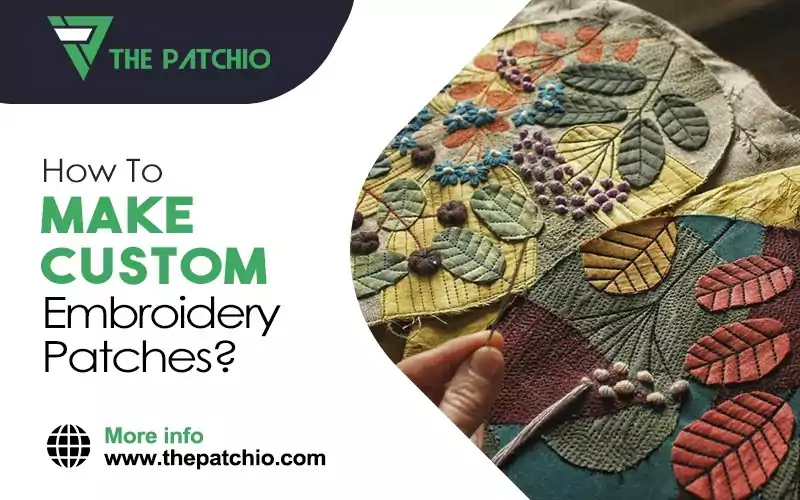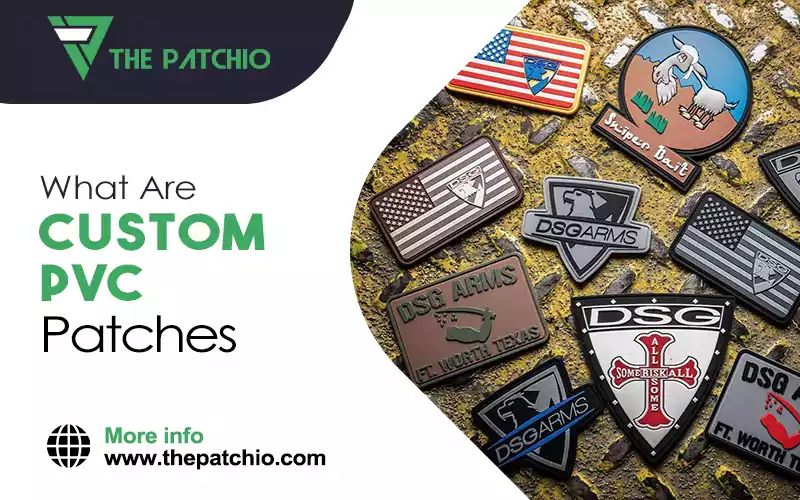
A cloth badge, often known as an embroidered patch, is a form of embroidery patch produced from a fabric backdrop and thread. We all enjoy fashionable and creative ways people employed color and designs in an embroidered patch.
By sewing or ironing patches onto your favorite jacket, you could demonstrate your support for the people, bands, politics, or anything you support and love, no matter who you were!
The time it takes to complete an embroidery is entirely dependent on amount of stitches you need to complete. Larger patterns don't necessarily need a large number of stitches. Smaller patterns, on the other hand, may require more stitches than anticipated.
It takes longer to embroider a patch than other patterns. It's because each letter must be sewn separately. You may embroider several patterns at the same time, but not names.
Embroidering includes a lot of small elements that you must pay attention to. It can include symbols and unique pictures in addition to letters.
Furthermore, preparation is half the battle and this is something to remember while personalizing the embroidered patch! So it is also important to know how long does it takes to make embroidered patches.
What is the approximate time to make an embroidered patch?
First of all, you should know that embroidery is a fabric craft that requires time and patience. This is the fact which is true for both beginners and experts. It also applies to professionals and long-term fans.
The patch design, coloring, size, and everything depend on your choice and desire. It's entirely up to the person how they want it to appear on their products or goods. The majority of the patches, including those for clubs and workplaces, are machine-made. Patches created by hand are solely intended for personal use or as a gift to friends.

Time estimate to complete one patch:
Different designs consume different timings. One patch can take an entire day to hand embroider if you do it by hand including the breaks in the middle of the workday.
They are cost-effective and effective identity builders in a variety of situations. Multiple patterns and designs may be used using embroidered pattern designs.
As compared to hand embroidery, with a machine embroidering patches takes less time to make an embroidered patch, which is almost half a day or 6 to 7 hours.
If we focus on stitches only that it would be better to say that:
You can stitch at 400 stitches per minute and complete the project in about 5 to 6 hours if you work continuously. Sometimes, it takes around 1-2 hours to finish your single project if you are doing it with a sewing machine.Need More Information?
Request a quote. We will get back to you within 8-12 hours with a custom product quote.
Their versatility makes them stand out!
Embroidered patches are highly adaptable, since they may be used on a variety of bags and fabrics. Their versatility has made them extremely popular in a variety of forms.
When embroidering a patch, there are several aspects to consider. The amount of stitches determines how long it takes to complete one patch. It's also conceivable that the size of your design will cause a delay in manufacturing.
Requirements for sewing machine method:
A sewing machine, the fabric of your choosing, fusible interfacing, embroidery floss, and needles, and a pencil are all you need to make the embroidered patch using the sewing method.
When making a patchwork without using an embroidery machine, the fabric selection must be quite cautious. It is advisable to choose a firm material to avoid cloth puckering or straining.

Required time to make an embroidered patch for hats:
The time for multiple embroidered projects is different. If we talk about embroidering hats, it will take around 5 minutes to complete more than 3500 stitch patterns at almost 500 stitches per minute. Cutting and trimming are included in this time estimate. This time rate can only be achieved with the help of a machine.
These patches come in a variety of designs, shapes, and sizes, which is a plus. They're easy to put on tees, sweatshirts, coats, caps, and other items of clothing. You may also remove them at any time without damaging the garment, allowing it to be reused.
Required time to make an embroidered patch for t-shirts or other garments:
If we talk about embroidery on a garment, it might take 5-6 hours to complete.
Embroidered patches are underappreciated in terms of marketing techniques, and despite their effectiveness in conveying a message, the industry is still catching up. Patches are also worn by the military, emergency responders, and adventure clubs.

Required time to make an embroidered patch for logos:
It will take around 2 to 3 hours approximate to complete an embroidered logo with the help of a sewing machine.
Concentration and sincerity are a must in this industry otherwise you will not be able to get the best results you wish for!
Techniques for embroidered backing patches:
These patches can be heat sealed or sewn onto clothing depending upon the requirements. Some patches are manufactured and developed specifically for industrial use. All of the patches can be either permanent or temporary on an article of clothing, depending on their purpose.
Aside from the traditional sewing method, Iron-on backing is one of the more modern methods for attaching it. Fabrics, colors, and fonts for custom embroidered patches are all available. These fasteners, which may be found on any article of clothing, are used to give the wearer a unique identification. Nylon and other synthetic textiles are incompatible with Heat seal.
Conclusion
No matter if you are just a beginner who has just started to design the embroidery patch or a senior who has been working for a long period in this field, you can't say that it's an easy or less time taking process.
Making embroidered patches is a long-standing practice, and it was formerly one. Embroidered patches are commonly associated with Boy Scouts, motorcycle organizations, and first responders such as police officers, firemen, and paramedics. While these are obvious applications for embroidered patches, many individuals overlook the advantages they may provide to businesses.










